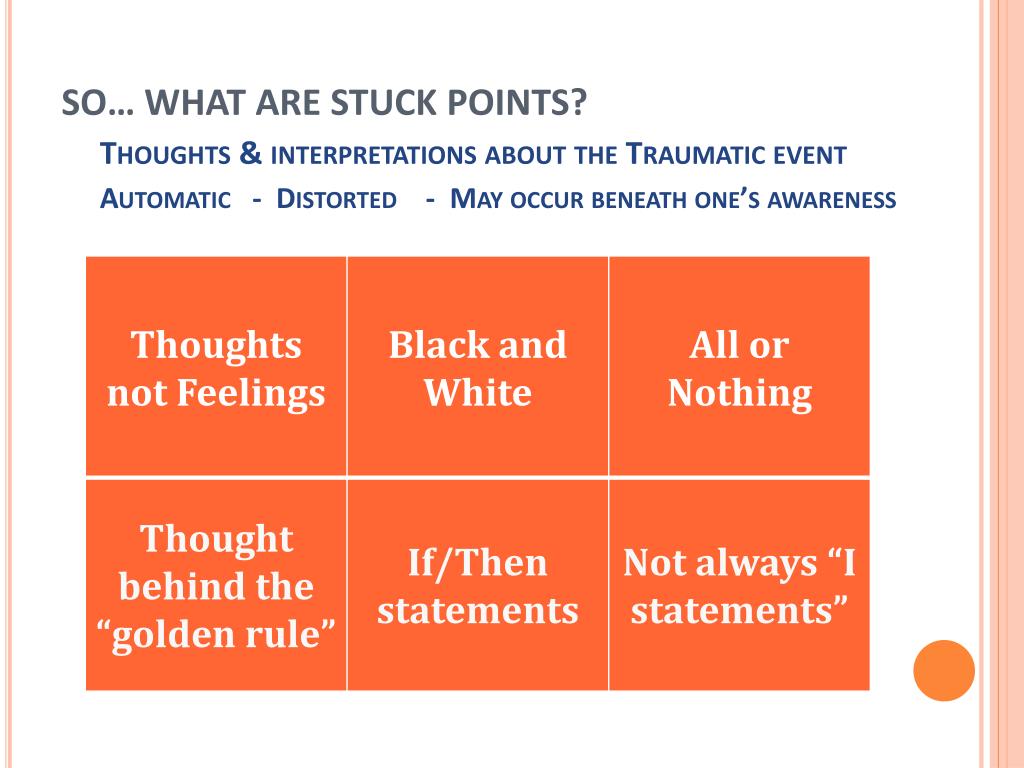

Cognitive Processing TherapyĬognitive Processing Therapy (CPT) is another evidence-based treatment for severe PTSD. This component of CBT involves working with a therapist to identify and change inaccurate or distorted beliefs about oneself, others, and the world.

The cognitive restructuring aims to help individuals identify and challenge negative thought patterns related to the traumatic event. CBT for PTSD typically involves several components, including exposure therapy, cognitive restructuring, and skills training. Cognitive Behavioral TherapyĬognitive-behavioral therapy (CBT) is a well-established evidence-based treatment for post-traumatic stress disorder (PTSD), including severe cases. However, some evidence-based treatments have been shown to be effective for many individuals with severe PTSD. The best treatment for severe PTSD can depend on individual factors, such as the severity and type of symptoms experienced, as well as personal preferences and responses to treatment. Severe PTSD can cause significant distress, and individuals may struggle with depression, anxiety, or other mental health conditions. Severe PTSD is diagnosed when an individual experiences these symptoms for an extended period, typically longer than three months, and they interfere with daily activities such as work, school, and relationships. For some individuals, these symptoms can be severe and persistent, significantly impacting their daily functioning and quality of life. The symptoms of PTSD can include intrusive thoughts or memories, flashbacks, avoidance of triggers or reminders of the trauma, and heightened anxiety or arousal. This can develop after individual experiences or witnesses a traumatic event. Severe PTSD, or post-traumatic stress disorder, is a mental health condition. 3 How Do You Calm Down After PTSD Trigger?.2.5 Eye Movement Desensitization and Reprocessing.
Cognitive processing therapy how to#
With the help of a trained and experienced therapist, people can learn how to reframe their thoughts and experiences, gain insight into themselves and their beliefs, and ultimately lead healthier lives. The goal of CPT is to help people move away from the painful emotions they are experiencing and develop healthy coping skills. People can also practice new skills, such as relaxation and stress management techniques, that can help reduce intrusive memories, negative thought patterns, and debilitating emotions related to the traumatic experience.

Through CPT, people learn new ways of thinking about the traumatic event and its consequences which can lead to lasting changes in emotional and physical reactions.ĬPT typically involves 12 one-hour sessions with our therapist, Macie Babo, LPC, during which people learn to identify harmful thoughts and replace them with more positive, realistic ones. It helps people understand how their thoughts about a traumatic experience are affecting their current reactions. Cognitive Processing Therapy (CPT) is an evidence-based treatment designed to help people struggling with PTSD, depression, and other mental health issues related to trauma.


 0 kommentar(er)
0 kommentar(er)
